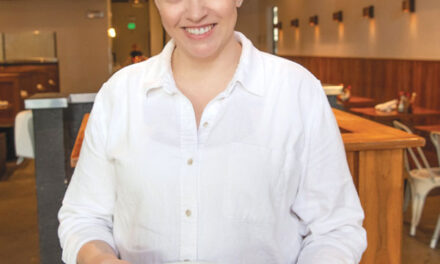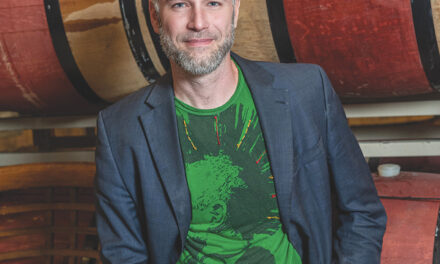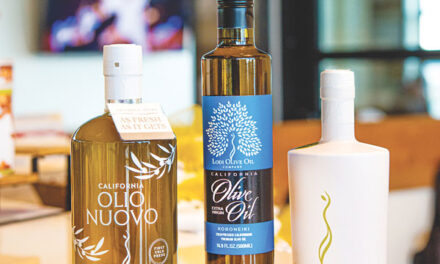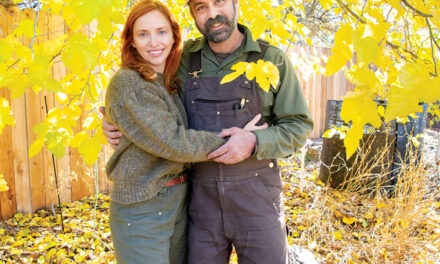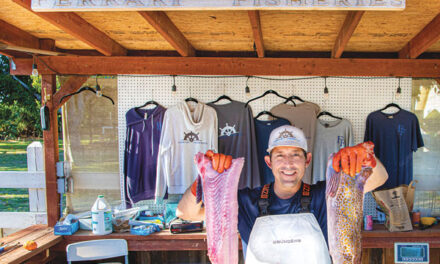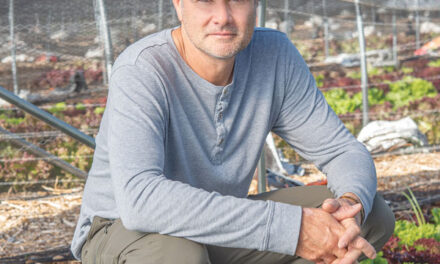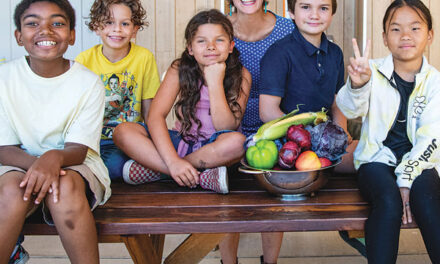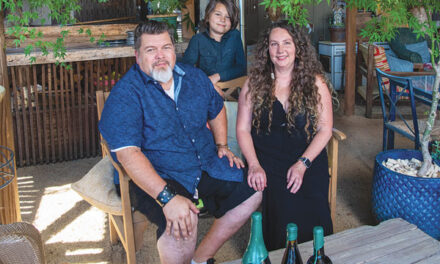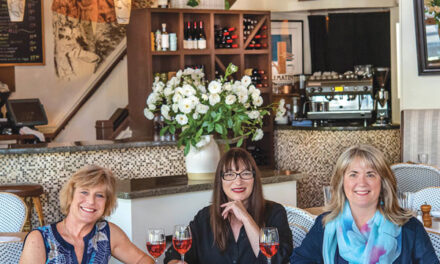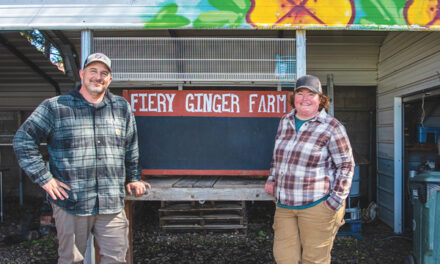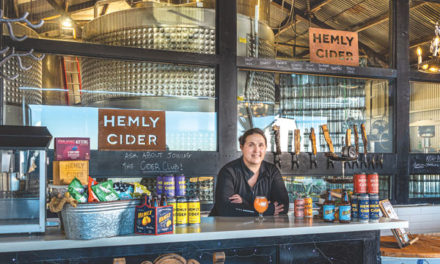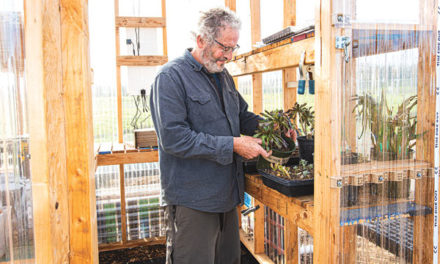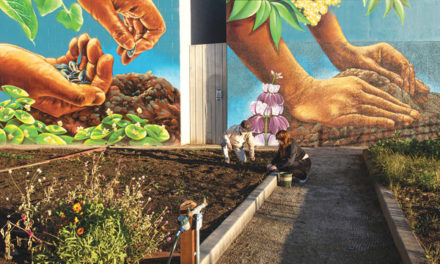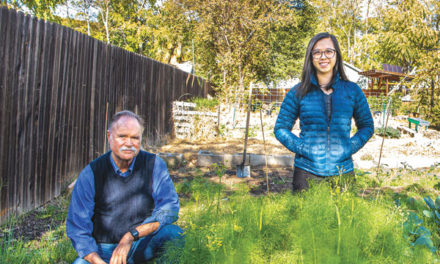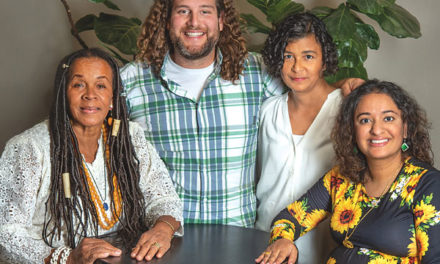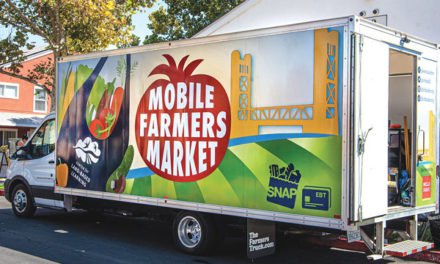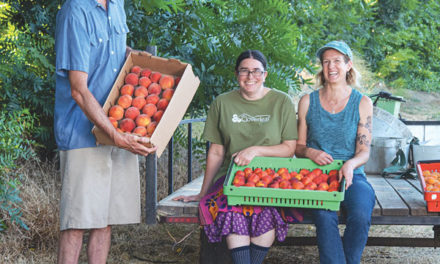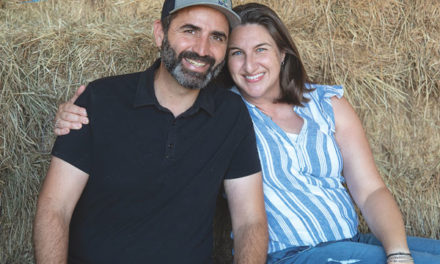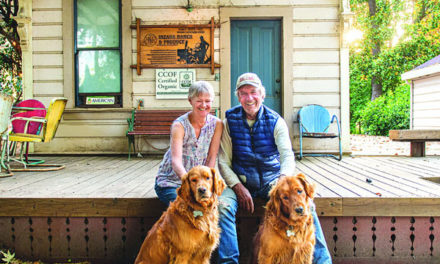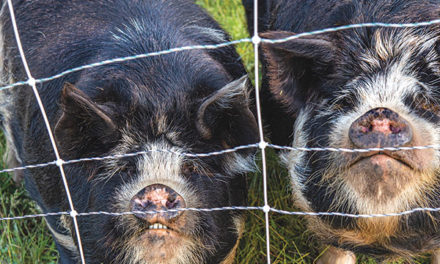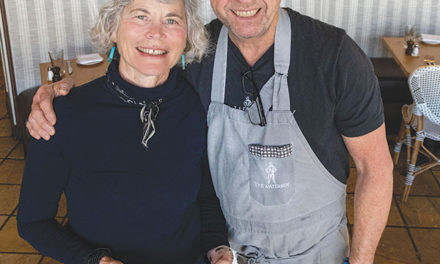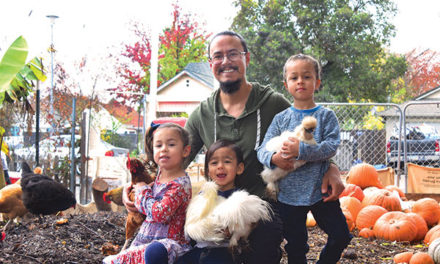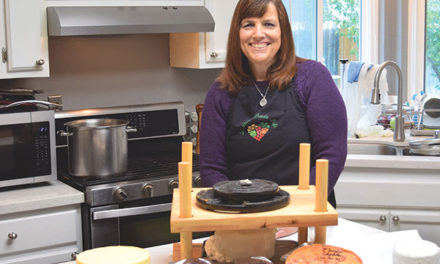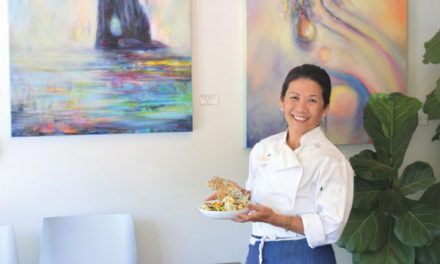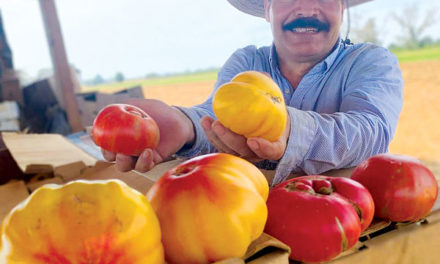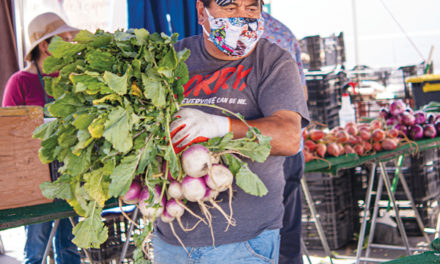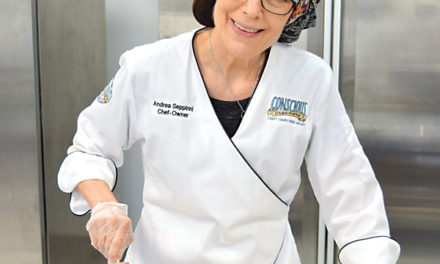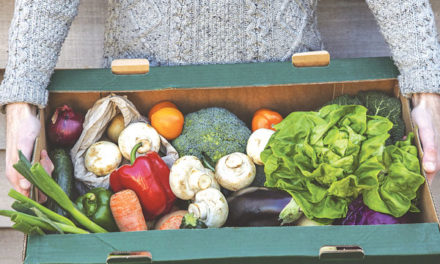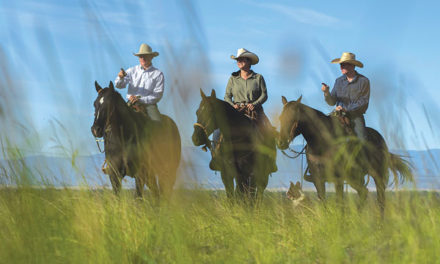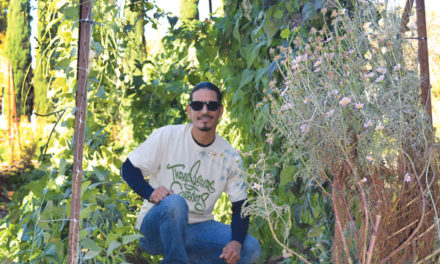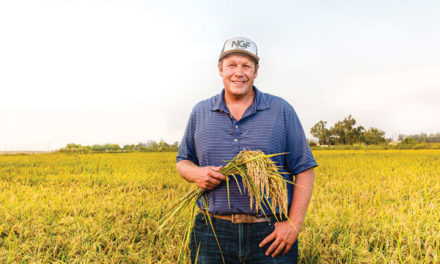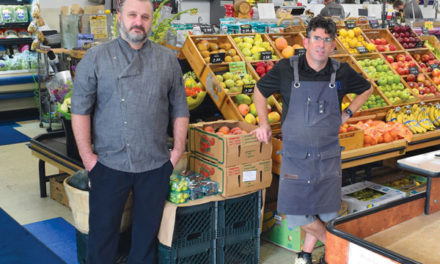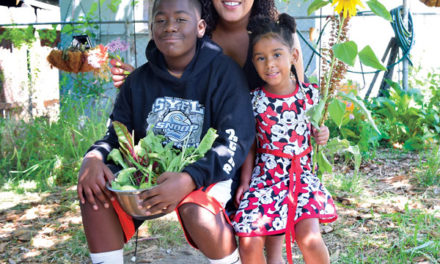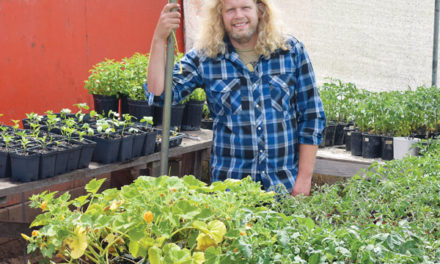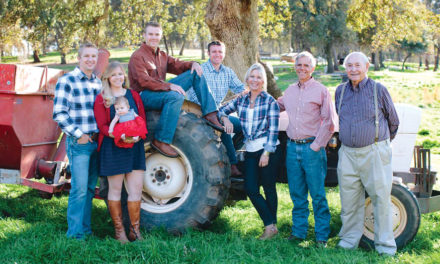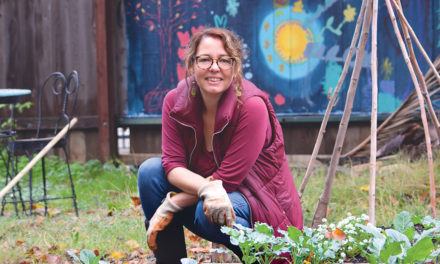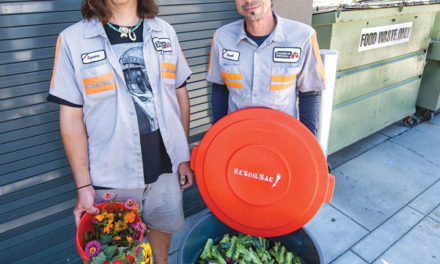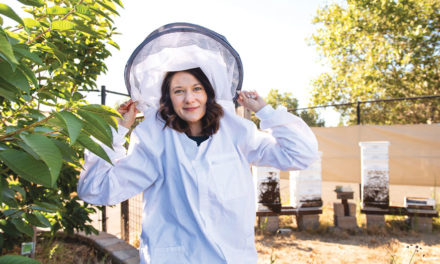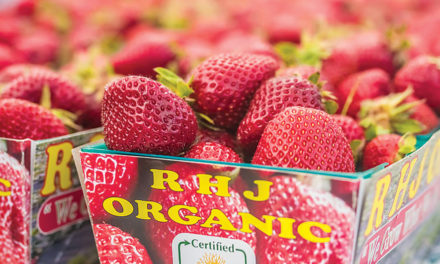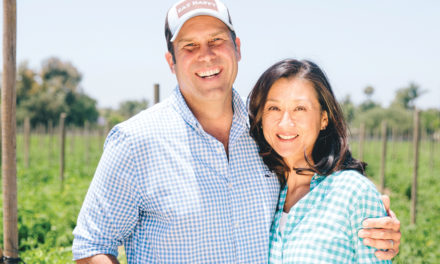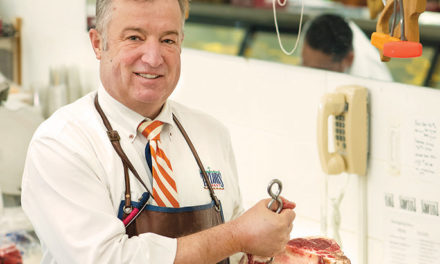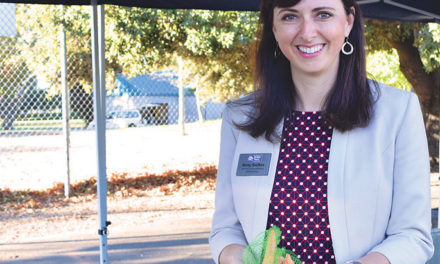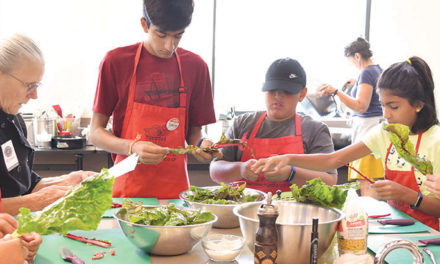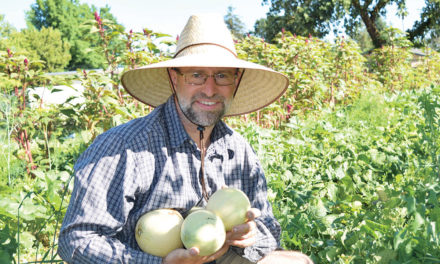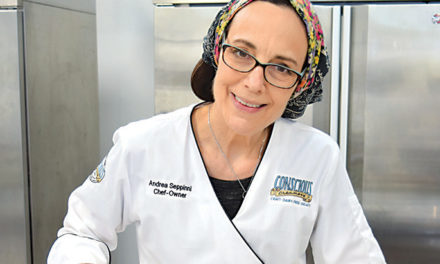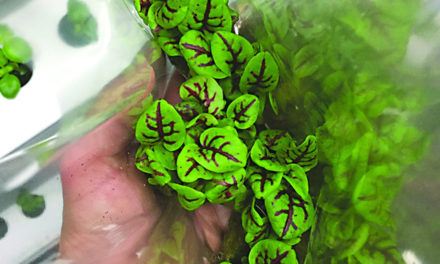Apples Plus
Local fruits, vegetables, nuts and more make their way into this cider
By Daniel Barnes
June 2018

When Vincent Sterne opened Two Rivers Cider Co. in 1996, it was one of the first craft cider companies in California to make its product from fresh fruit instead of concentrate. A David fighting many Goliaths, Two Rivers needed to stand out to compete with the industrial ciders imported from England and Canada. Following the lead of the always-innovating craft beer industry, Sterne decided to buck convention by adding pressed juice from locally sourced fruit into his dry apple ciders.
“Pomegranate cider was a first for Two Rivers and, as far as I know, the whole cider market,” says Sterne. “I think the pomegranate cider put Two Rivers on the map.”
Fast-forward two decades and the tap list at Two Rivers’ tasting room bursts
with fruit flavors. The group of “core ciders” includes the pioneering pomegranate as well as flavors like blackberry, strawberry jam, blood orange and huckleberry, while the “rotating” group of seasonal ciders includes raspberry and boysenberry.
However, the innovation doesn’t stop with sweet fruits. You can find unconventional ciders ranging from walnut to habanero to ginger, all of them shockingly well-balanced. There is also a hopped cider for beer fans, likely another first in the world of cider. “The hopped cider has become quite popular throughout the region,” says Sterne. “We always have a hopped cider on tap in our tasting room now.”
Sterne’s ability to experiment increased exponentially when Two Rivers opened its Hollywood Park tasting room in 2016. “The tasting room is an excellent platform for exploring new ciders and for gauging the consumer’s reaction,” he says. That spirit of experimentation even extends to the customers. “A lot of people like to mix ciders. They’ll take a ginger cider and mix that with a habanero cider,” he says.
When it comes to sourcing the fresh fruits, vegetables and nuts for his ciders, Sterne takes a variety of approaches. A lot of the citrus fruit comes directly from the tangerine, tangelo, orange, blood orange, lemon and grapefruit trees of customers in nearby neighborhoods like Curtis Park and Land Park. Sometimes a simple trip to the Sunday farmers market will spark an idea for a new cider.
Two Rivers also works directly with Northern California farmers to source the freshest seasonal produce. This summer, for example, Sterne is sourcing cherries from a farmer in Wilton. He might ferment some fresh-pressed cherry juice in with the apple juice, or he might add it into an already-made base cider. Sterne also plans to create a cherry-flavored cyser, a blend of cider and honey, using honey sourced from the same farmer supplying the cherries.
In another potentially pioneering move, Sterne has started research and development on making sake with locally grown rice. “Sake is the most fascinating and challenging of all the fermentation industries,” he says. “It’s a more labor- and time-consuming process than beer or wine or cider because there are multiple parallel fermentations.”
Sterne recently returned from a trip to Japan, where he studied the centuries-old art of sake making, and where he also became enamored with the flavor of yuzu. “It’s a citrus fruit that’s like a cross between a lemon and an orange,” he says. “I was fascinated with the flavor, and I think that it would make a delicious cider.”
More seasonal produce will make its way into Sterne’s ciders over the course of the summer, including a popular kiwi cider. “It’s a very laborious process of peeling and pressing the kiwifruit,” he says. “We basically use a potato peeler to get the skin off, and it’s a long day.”
If there’s a concern moving forward, it’s that there won’t be enough apples for all the ciders that Sterne wants to make. While Sterne sources as many cider apples as he can from places like Barsotti Ranch in Camino and Five Mile Orchard in Watsonville, he also sources off-season apples from out of state. “California doesn’t grow enough apples to supply all us thirsty cider makers,” he says. “There’s a real financial challenge to keep the apple trees in the ground.”
However, Sterne holds out hope that with the increasing popularity of craft cider, that trend will start to change. “A lot of growers are realizing that there is a new market for cider fruit as opposed to table fruit,” says Sterne. “The advantage is that they’re not growing fruit that has to be cosmetically perfect, which also means less pesticide.”
Daniel Barnes can be reached at danielebarnes@hotmail.com


